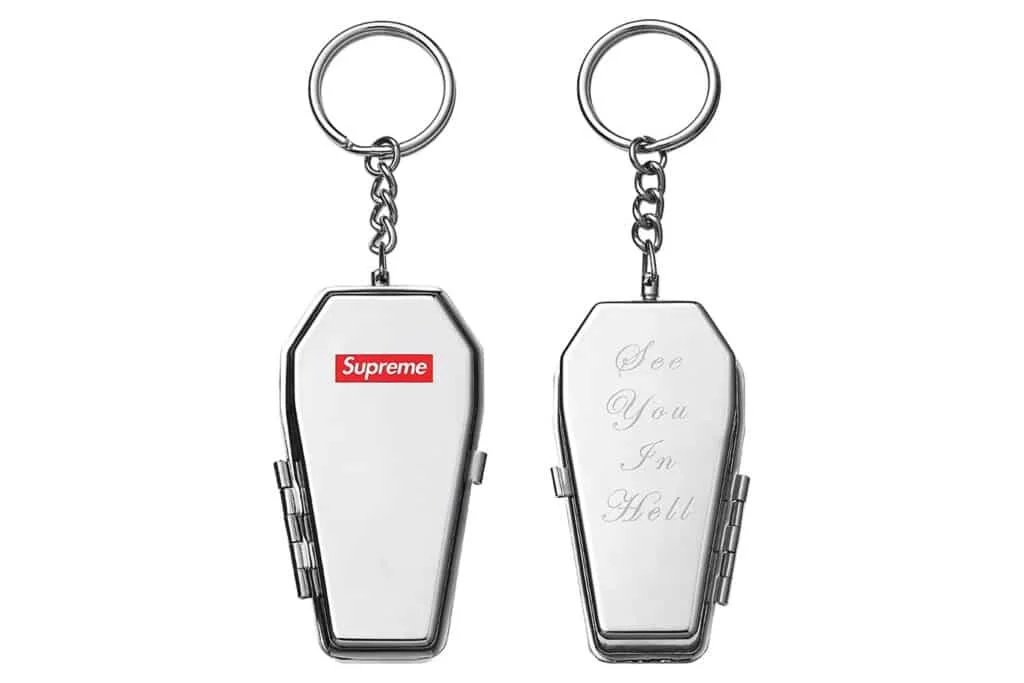The Supreme brand decline represents one of fashion’s most dramatic falls from grace. Once the undisputed king of streetwear culture, Supreme now faces an uncertain future after corporate acquisition stripped away its underground credibility. This transformation from cult status to mainstream mediocrity illustrates how quickly fashion empires can crumble when they lose touch with their core audience.
The Genesis of a Streetwear Empire
James Jebbia opened Supreme’s first location on Lafayette Street in 1994. The small skate shop targeted New York’s underground skating community with an uncompromising attitude. Jebbia understood that authenticity couldn’t be manufactured or bought through marketing campaigns.
The original store layout deliberately excluded mainstream shoppers. Narrow aisles and intimidating staff created barriers that only true insiders could navigate. This exclusivity became Supreme’s greatest asset and marketing strategy without traditional advertising spend.
Barbara Kruger’s bold red-and-white aesthetic inspired the iconic box logo design. Kruger’s confrontational art style perfectly captured the rebellious spirit that Supreme wanted to embody. The logo became a symbol of resistance against corporate fashion culture.
Early collaborations with artists like Rammellzee and Futura established Supreme’s cultural credentials. These partnerships weren’t commercial ventures but genuine artistic expressions. The brand invested in culture rather than chasing immediate profits.
Supreme’s initial customer base consisted entirely of New York skaters and graffiti artists. These communities valued authenticity above everything else and could instantly detect corporate interference. Jebbia respected this dynamic and maintained the brand’s underground connections.
The Thursday drop schedule emerged organically from skateboarding culture. Skaters traditionally received their weekly allowances on Thursdays and immediately spent money on new gear. Supreme capitalised on this natural rhythm without disrupting the community’s existing patterns.
Word-of-mouth marketing drove Supreme’s early growth rather than traditional advertising campaigns. Satisfied customers became brand evangelists who introduced friends to the exclusive world Supreme had created. This organic growth felt authentic because it genuinely was authentic.
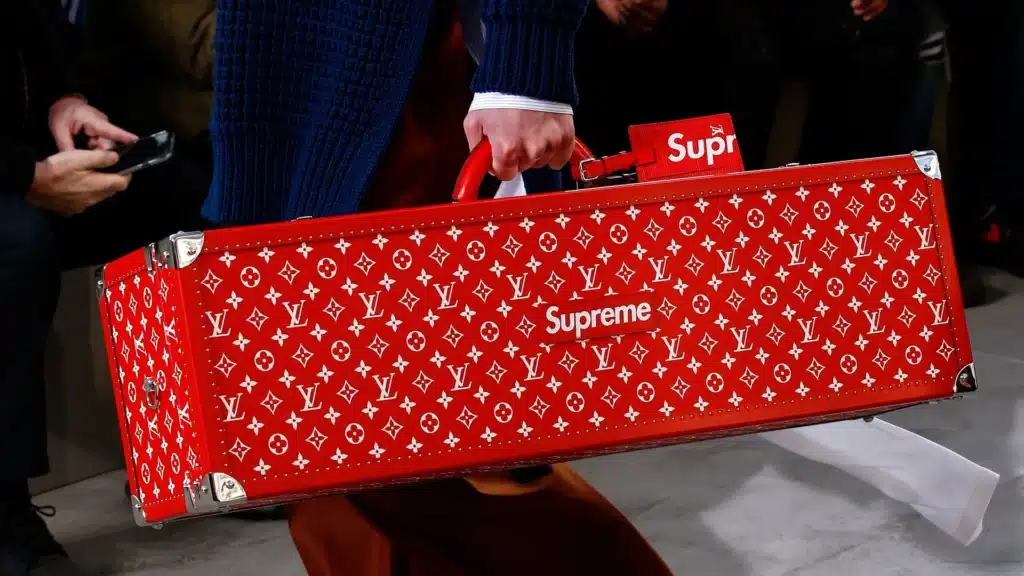
The Scarcity Revolution That Changed Fashion
Supreme revolutionised fashion retail by weaponising scarcity in unprecedented ways. The brand produced intentionally limited quantities that sold out within minutes of release. This strategy created artificial demand that far exceeded actual supply.
The Supreme brand decline began when this scarcity model became formulaic rather than organic. Early drops sold out because demand genuinely exceeded supply, not because of manipulated production numbers. Customers could sense when scarcity became a marketing tactic rather than natural limitation.
Resale markets exploded around Supreme’s limited releases throughout the 2000s. Original retail prices of £50 became resale values of £500 overnight. These dramatic price increases validated Supreme’s cultural importance and desirability.
Thursday became a cultural phenomenon across global streetwear communities. Students skipped classes and employees called in sick to participate in weekly drops. Supreme transformed routine shopping into appointment television for fashion enthusiasts.
The brand’s website couldn’t handle the massive traffic spikes that occurred every Thursday morning. Server crashes became part of the Supreme experience and added to the exclusivity narrative. Technical limitations accidentally enhanced the brand’s desirability.
Queue culture developed around Supreme stores in major cities worldwide. Customers camped overnight for particularly coveted releases, creating temporary communities around shared desires. These queues became media spectacles that generated free publicity for the brand.
Supreme’s influence extended far beyond skateboarding into music, art, and luxury fashion circles. Hip-hop artists wore Supreme pieces in music videos, legitimising the brand within influential cultural movements. This crossover appeal multiplied Supreme’s cultural impact exponentially.
Cultural Pinnacle: The Louis Vuitton Moment
The Supreme x Louis Vuitton collaboration in 2017 marked the absolute peak of the brand’s cultural influence. This partnership between streetwear and luxury fashion shocked both industries and created unprecedented hype levels.
Initial rumours about the collaboration spread through fashion forums and social media platforms. Most observers dismissed these rumours as impossible given the vast cultural differences between both brands. The announcement proved that Supreme had achieved genuine luxury status.
Louis Vuitton’s participation validated Supreme’s position within high fashion hierarchies. The French luxury house rarely collaborated with other brands, making this partnership historically significant. Supreme had evolved from niche skate shop to luxury fashion peer.
Resale prices for collaboration pieces reached astronomical levels immediately after release. A simple trunk sold for over £50,000 on secondary markets. These prices demonstrated Supreme’s ability to compete with established luxury brands on pure desirability.
The collaboration attracted completely new demographics to Supreme’s customer base. Luxury fashion collectors who previously ignored streetwear began purchasing Supreme pieces. This expansion broadened the brand’s appeal but diluted its core identity.
Fashion Week presentations elevated Supreme’s status within industry circles. The brand appeared alongside established luxury houses at Paris Fashion Week. This mainstream recognition marked Supreme’s transition from underground to establishment brand.
Celebrity endorsements multiplied following the Louis Vuitton collaboration. A-list actors and musicians began wearing Supreme pieces to high-profile events. This visibility increased brand awareness but reduced exclusivity appeal for original customers.
The Acquisition: 2020The Corporate Takeover That Changed Everything
VF Corporation acquired Supreme for £1.6 billion in November 2020. The purchase marked the end of Supreme’s independence and beginning of its corporate era. Many longtime fans viewed this acquisition as the ultimate betrayal of the brand’s anti-establishment values.
Steve Rendle, VF Corporation’s CEO, promised that Supreme would maintain operational independence. These assurances failed to convince Supreme’s core customer base, who understood that corporate ownership inevitably changes brand culture. The damage to Supreme’s credibility occurred immediately upon announcement.
VF Corporation’s business model prioritised growth and profitability over cultural authenticity. The company’s track record with other brands suggested that commercialisation would accelerate under new ownership. Supreme’s fans correctly predicted that corporate priorities would conflict with brand values.
The acquisition fundamentally altered Supreme’s relationship with its community. Previously, Supreme felt like a shared secret among cultural insiders. Corporate ownership transformed the brand into just another fashion company seeking maximum profits.
Stock market pressures began influencing Supreme’s creative decisions after the acquisition. VF Corporation needed to justify the massive purchase price through consistent revenue growth. This financial pressure encouraged safer, more commercial product choices.
Supreme’s anti-establishment messaging became hypocritical after joining a major corporation. The brand could no longer credibly critique mainstream culture while being part of it. This contradiction undermined decades of carefully cultivated authenticity.
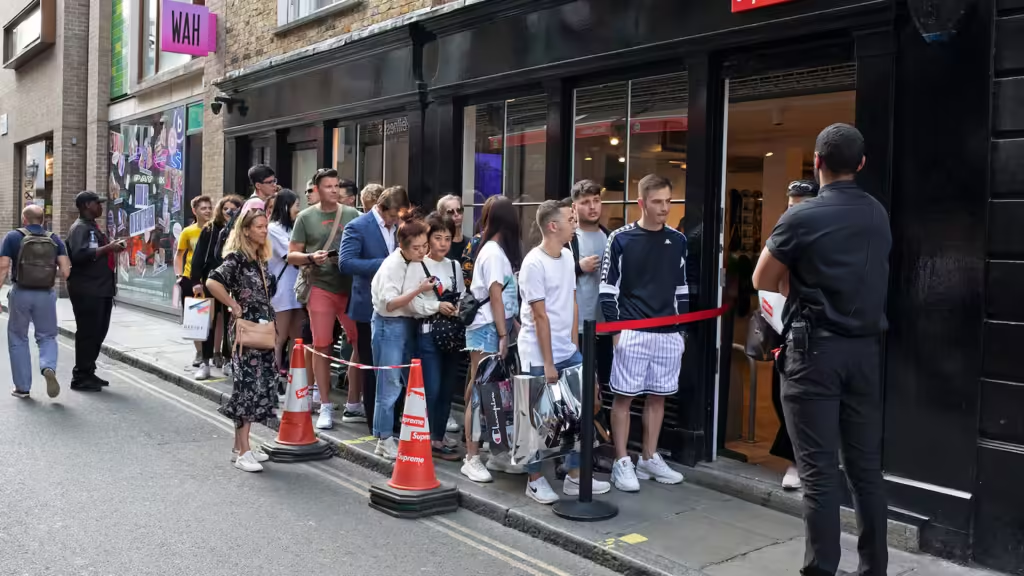
The Unravelling: 2021-2024
The Supreme brand decline accelerated rapidly after corporate acquisition. Revenue growth targets forced the brand to expand beyond its natural customer base. This expansion diluted Supreme’s exclusivity and alienated original supporters.
Store expansion programmes opened Supreme locations in mainstream shopping centres globally. Each new store reduced the brand’s scarcity value and exclusive appeal. The Lafayette Street mystique disappeared when Supreme became available everywhere.
Drop frequency increased to meet revenue targets set by VF Corporation. Weekly releases became predictable rather than special events. The anticipation that previously drove Supreme culture evaporated when drops became routine corporate exercises.
Collaboration quality declined as Supreme partnered with mainstream brands for broader appeal. The Oreos collaboration exemplified this shift towards commercial partnerships over cultural relevance. Longtime fans ridiculed these obvious cash-grab attempts.
Tremaine Emory’s appointment as Creative Director in 2022 initially raised hopes for creative renewal. His previous work with Denim Tears demonstrated understanding of streetwear’s cultural foundations. However, his tenure lasted only one year before resignation.
Emory’s departure citing “systemic racism” within VF Corporation exposed internal cultural conflicts. His resignation statement highlighted the incompatibility between corporate culture and authentic streetwear values. This public controversy further damaged Supreme’s reputation.
Design innovation stagnated under corporate oversight and risk-averse decision making. Box logo variations replaced genuine creativity as Supreme relied on past successes. The brand became a parody of itself rather than a cultural leader.
Dubai’s Streetwear Scene Reflects Global Decline
Dubai’s streetwear market perfectly illustrates the Supreme brand decline on a global scale. The city’s fashion-conscious youth previously treated Supreme drops as cultural events. Today, Supreme releases generate minimal excitement among local streetwear enthusiasts.
Premium resale shops in Dubai Marina once dedicated entire sections to Supreme merchandise. These stores now struggle to move Supreme inventory at discount prices. The dramatic value decline reflects broader cultural shifts away from the brand.
Arjun, a Dubai-based reseller, witnessed Supreme’s decline firsthand through his business operations. His customers stopped requesting Supreme pieces around 2022, preferring emerging brands instead. This shift occurred across multiple demographics and age groups simultaneously.
Local streetwear communities in Dubai embraced Corteiz, Trapstar, and other insurgent brands. These alternatives captured the anti-establishment energy that Supreme once embodied. Young consumers gravitated towards brands that felt authentic rather than corporate.
The fake Supreme market in Dubai’s Karama district continues thriving despite declining authentic demand. Counterfeit pieces often sell better than genuine items due to lower prices. This ironic situation demonstrates how far Supreme’s perceived value has fallen.
Dubai’s multiculturally influences created unique streetwear preferences that Supreme failed to address. Local consumers wanted culturally relevant designs rather than generic American skateboarding references. Supreme’s one-size-fits-all approach ignored regional market needs.
Social media influencers in Dubai stopped featuring Supreme pieces in their content streams. These tastemakers recognised their audiences had moved beyond Supreme towards more relevant brands. The influence shift accelerated Supreme’s cultural decline in regional markets.
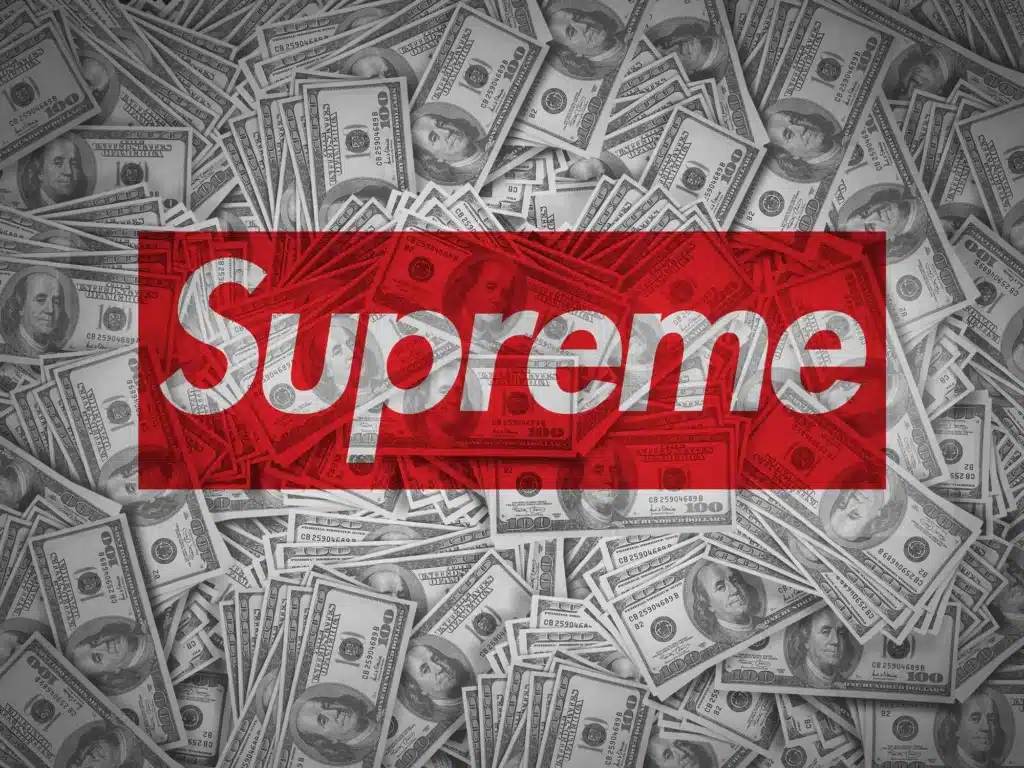
The Competition That Stole Supreme’s Crown
Corteiz emerged as Supreme’s most direct competitor by copying successful strategies while avoiding mistakes. The London-based brand uses guerrilla marketing and artificial scarcity more effectively than modern Supreme. Corteiz captures the underground energy that Supreme abandoned after corporate acquisition.
Aimé Leon Dore appealed to Supreme’s abandoned demographic through sophisticated minimalist designs. The New York brand offered luxury streetwear without Supreme’s aggressive branding approach. ALD’s subtlety attracted customers who had outgrown Supreme’s obvious logo placement.
Palace maintained credibility within skateboarding communities that Supreme had neglected since corporate acquisition. The British brand’s authentic skateboarding connections contrasted sharply with Supreme’s commercialised approach. Palace proved that streetwear brands could grow without sacrificing authenticity.
Stüssy’s remarkable comeback demonstrated how fallen streetwear brands could rebuild cultural relevance. The California brand downsized operations and focused on cultural connections rather than maximum profits. Stüssy’s revival provided a blueprint for potential Supreme recovery.
Travis Scott’s Cactus Plant Flea Market represented a new generation of celebrity-driven streetwear brands. These alternatives offered cultural cache and exclusivity that Supreme could no longer provide. Celebrity endorsements became more valuable than Supreme’s historical credibility.
Fear of God Essentials captured luxury streetwear customers who previously bought Supreme pieces. Jerry Lorenzo’s brand offered similar aesthetic appeal with better quality and design innovation. Essentials proved that consumers would pay premium prices for authentic luxury streetwear.
Stone Island and other European brands gained popularity among Supreme’s former customers. These alternatives provided heritage, quality, and exclusivity that corporate Supreme couldn’t match. The geographic shift reflected broader changes in streetwear culture and consumer preferences.
Financial Decline and Market Realities
VF Corporation reported Supreme revenue declined from £434 million to £405 million year-over-year. This 7% decrease occurred during a period when streetwear markets continued expanding globally. Supreme’s decline happened despite favourable market conditions that should have supported growth.
Resale market data reveals the extent of Supreme’s value destruction over recent years. Box logo hoodies that commanded £800+ resale prices in 2017 now sell for £250-300. This dramatic decline reflects reduced demand and increased supply from expanded retail presence.
StockX trading data shows Supreme pieces consistently underperforming market expectations since 2021. The platform’s Supreme price index declined while other streetwear brands appreciated significantly. This data provides objective evidence of Supreme’s cultural decline.
VF Corporation’s stock price suffered partly due to Supreme’s disappointing performance post-acquisition. Investors questioned the strategic wisdom of paying premium prices for a culturally dependent brand. The acquisition became a cautionary tale about purchasing lifestyle brands.
Inventory management problems emerged as Supreme struggled to forecast demand accurately. Products that previously sold out instantly began accumulating in retail stores. This inventory buildup forced promotional pricing that further damaged brand perception.
Global economic pressures affected Supreme disproportionately compared to essential fashion categories. Luxury streetwear purchases represented discretionary spending that consumers reduced during uncertainty. Supreme’s premium pricing became a liability rather than an asset.
The Creative Crisis and Leadership Chaos
Tremaine Emory’s hiring as Creative Director initially generated optimism among Supreme’s cultural critics. His Denim Tears brand demonstrated understanding of streetwear’s social and cultural dimensions. However, corporate constraints limited his ability to implement meaningful changes.
Emory’s resignation after one year highlighted fundamental incompatibilities between authentic streetwear culture and corporate management. His departure statement specifically cited “systemic racism” within VF Corporation’s structure. This public criticism damaged both Supreme’s and VF Corporation’s reputations significantly.
Design-by-committee approaches replaced the singular creative vision that originally defined Supreme. Corporate approval processes stifled innovation and risk-taking that had previously driven brand development. The result was safer but less inspiring product offerings.
Marketing campaigns became formulaic rather than culturally relevant after corporate takeover. VF Corporation’s traditional marketing approaches conflicted with streetwear’s organic, community-driven promotion methods. These mismatched strategies reduced campaign effectiveness and cultural impact.
Collaboration partnerships shifted towards commercially safe brands rather than culturally significant artists. The Oreos partnership exemplified this change towards mainstream appeal over cultural relevance. Original customers ridiculed these obvious commercial calculations.
Creative talent departures accelerated throughout 2023 as VF Corporation imposed corporate culture. Designers who understood streetwear’s nuances left for smaller, more authentic brands. This brain drain removed institutional knowledge about Supreme’s cultural foundations.

Global Market Dynamics and Cultural Shifts
Generation Z consumers approached streetwear differently than millennials who originally embraced Supreme. Younger customers preferred brands that aligned with their values rather than simply offering exclusive products. Supreme’s corporate ownership conflicted with Gen Z’s anti-establishment preferences.
Social media algorithms changed how streetwear brands built awareness and cultural relevance. Organic virality became more valuable than traditional marketing campaigns or celebrity endorsements. Supreme’s corporate approach couldn’t generate authentic social media moments.
Sustainability concerns increasingly influenced young consumers’ purchasing decisions across all fashion categories. Supreme’s fast-fashion approach and disposable product culture conflicted with environmental consciousness. Competitors addressed these concerns more effectively.
Cultural authenticity became paramount for streetwear brands seeking to maintain relevance. Consumers could easily detect corporate interference and responded by abandoning compromised brands. Supreme’s corporate ownership made authenticity impossible to maintain convincingly.
Global supply chain disruptions affected Supreme’s production schedules and product availability. However, these challenges impacted all fashion brands equally, suggesting Supreme’s problems extended beyond operational difficulties. The brand’s cultural decline preceded logistical challenges.
Regional market preferences increasingly influenced global streetwear trends rather than American brands dictating worldwide fashion. Supreme’s New York-centric approach became less relevant as local scenes gained prominence. The brand failed to adapt to this fundamental shift.
The Psychology of Streetwear Abandonment
Supreme’s core customers experienced genuine feelings of betrayal after the VF Corporation acquisition. These individuals had invested emotionally in the brand’s anti-establishment values and exclusive culture. Corporate ownership violated the implicit social contract between Supreme and its community.
Brand loyalty in streetwear depends heavily on perceived authenticity and cultural alignment. Supreme’s customers weren’t purchasing products but buying into cultural identity and community membership. Corporate ownership disrupted these psychological connections irreparably.
The psychology of scarcity requires genuine limitations rather than artificial restrictions. Supreme’s expanded retail presence revealed that previous scarcity was manufactured rather than natural. This revelation destroyed the psychological foundation of Supreme’s appeal.
Social signalling through Supreme pieces became counterproductive as the brand gained mainstream acceptance. Original customers valued Supreme because it communicated insider knowledge and cultural sophistication. Widespread availability eliminated these signalling benefits completely.
Cognitive dissonance emerged when Supreme’s anti-establishment messaging conflicted with corporate ownership reality. Customers couldn’t reconcile purchasing rebellion from a major corporation. This psychological conflict forced consumers to choose between values and brand loyalty.
Nostalgia for Supreme’s golden era couldn’t overcome current reality disappointments. Former customers remembered when Supreme drops generated genuine excitement and cultural relevance. Contemporary releases failed to recreate these emotional experiences.
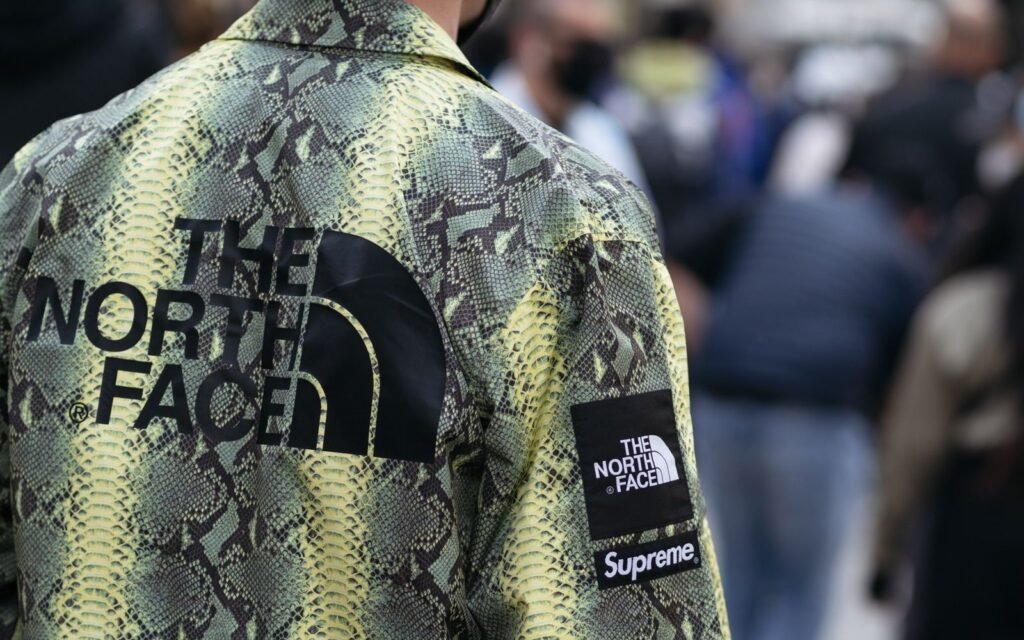
Alternative Brands Capturing Supreme’s Former Audience
Corteiz successfully copied Supreme’s scarcity model while maintaining authentic anti-corporate messaging. The London brand’s guerrilla marketing tactics and coded release systems recreated the exclusivity that Supreme abandoned. CRTZ proved that Supreme’s strategies could work when executed authentically.
Palace maintained credibility within skateboarding communities through genuine cultural connections. The British brand’s founders remained actively involved in skateboarding rather than pursuing pure commercial interests. This authenticity attracted Supreme’s original skateboarding customers.
Aimé Leon Dore offered sophisticated minimalism that appealed to Supreme customers seeking maturity. The New York brand provided luxury streetwear without aggressive branding or artificial scarcity tactics. ALD captured customers who had outgrown Supreme’s adolescent aesthetic.
Travis Scott’s various brand initiatives demonstrated celebrity-driven streetwear’s growing influence. These projects combined star power with authentic cultural connections that Supreme could no longer provide. Celebrity brands became serious competitors for Supreme’s cultural position.
Stone Island and other European heritage brands gained popularity among Supreme’s former luxury customers. These alternatives offered craftsmanship, innovation, and exclusivity without corporate compromise. The geographic shift reflected broader changes in global streetwear preferences.
Fear of God Essentials captured the luxury streetwear segment through quality and design innovation. Jerry Lorenzo’s brand proved that consumers would pay premium prices for authentic products. Essentials demonstrated that Supreme’s pricing power had migrated elsewhere.
Potential Recovery Scenarios and Future Possibilities
A management buyout could potentially restore Supreme’s independence and cultural credibility. However, such scenarios require massive financial resources and VF Corporation’s willingness to sell. The probability of this outcome remains low given current market conditions.
Private equity acquisition might provide the operational independence necessary for cultural renewal. This approach worked successfully for Stüssy’s revival during the 2010s. However, private equity ownership would require significant changes to Supreme’s business model and operations.
A gradual downsizing strategy could help Supreme rebuild authenticity by reducing market presence. Closing marginal retail locations and reducing production volumes might restore scarcity value. This approach requires accepting reduced revenue in exchange for cultural credibility.
Creative partnerships with authentic streetwear figures could potentially restore Supreme’s cultural relevance. However, such partnerships require operational independence that VF Corporation seems unlikely to provide. Corporate oversight would undermine any authenticity initiatives.
Generational change within Supreme’s management could bring fresh perspectives to brand development. However, VF Corporation’s corporate culture would likely constrain any innovative approaches. Systematic change requires ownership change rather than personnel adjustments.
Geographic repositioning might allow Supreme to rebuild in markets where brand perception remains positive. However, global communication makes regional reputation management increasingly difficult. Past mistakes follow brands across all markets in today’s connected world.
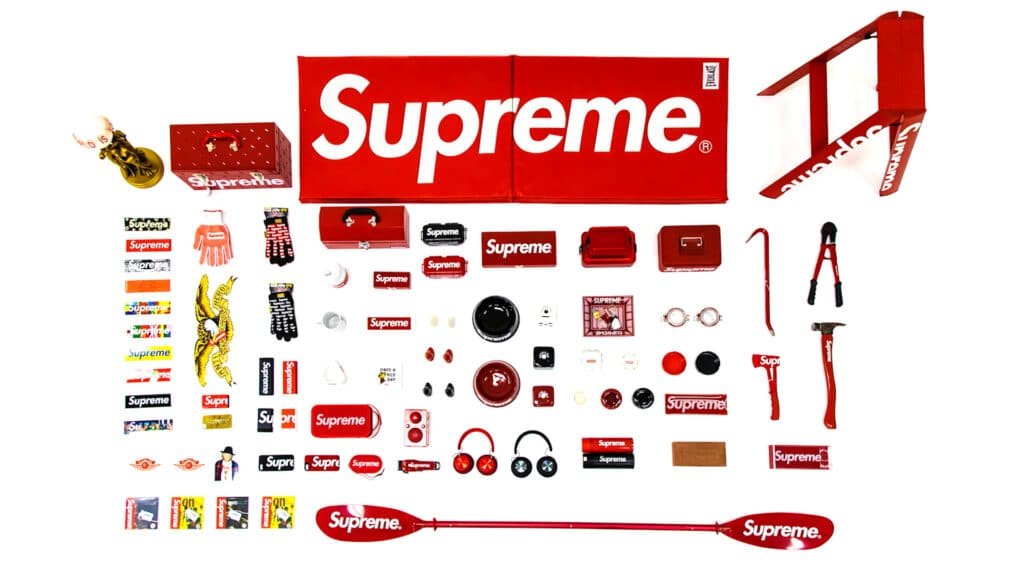
The Broader Implications for Streetwear Culture
Supreme’s decline demonstrates the fundamental incompatibility between authentic streetwear culture and corporate ownership. The brand’s trajectory serves as a cautionary tale for other independent streetwear labels considering acquisition offers. Cultural authenticity cannot survive corporate systematisation.
[Image Description: Industry impact diagram showing how Supreme’s decline affected overall streetwear market dynamics, investor behaviour, and cultural movements]
Venture capital and private equity interest in streetwear brands has increased dramatically following Supreme’s initial success. However, Supreme’s subsequent decline may cool investor enthusiasm for cultural brands. The difficulty of maintaining authenticity under financial pressure becomes apparent.
The Supreme brand decline validates the importance of founder-led management in cultural businesses. James Jebbia’s departure from operational control coincided with Supreme’s cultural decline. This correlation suggests that authentic streetwear requires authentic leadership.
Emerging brands now study Supreme’s mistakes to avoid similar pitfalls during their growth phases. The Supreme case provides a roadmap of what not to do when scaling cultural brands. This institutional knowledge may help future streetwear labels maintain authenticity.
Consumer sophistication in streetwear markets has increased dramatically since Supreme’s peak popularity. Modern customers can more easily identify authentic versus manufactured cultural movements. This evolution makes it harder for corporate brands to succeed through manipulation alone.
The democratisation of fashion through social media has reduced established brands’ gatekeeping power. Emerging labels can build audiences directly without traditional fashion industry approval. This change reduces barriers to entry but increases competition for attention and cultural relevance.
Lessons from Fashion History and Brand Evolution
Stüssy’s successful comeback after its mid-2000s decline provides a potential template for Supreme’s revival. The California brand reduced its retail footprint, focused on cultural connections, and gradually rebuilt credibility. However, Stüssy’s recovery took over a decade and required fundamental changes.
[Image Description: Historical comparison showing brand lifecycle patterns for Stüssy, Supreme, and other streetwear labels, highlighting recovery possibilities and failure modes]
Fashion history demonstrates that cultural brands can recover from decline through authentic reinvention. However, such recoveries require acknowledging past mistakes and implementing fundamental changes. Supreme’s corporate ownership structure may prevent the flexibility necessary for genuine transformation.
The luxury fashion industry offers examples of brands that successfully balanced commercial growth with cultural authenticity. However, these success stories typically involve founder-led management and operational independence. Supreme lacks both elements under current ownership structure.
Heritage fashion brands demonstrate that longevity requires constant cultural renewal rather than relying on past achievements. Supreme’s over-dependence on box logo variations and historical collaborations reflects this common mistake. Innovation and cultural relevance require ongoing investment and risk-taking.
International expansion often dilutes fashion brands’ cultural authenticity if not managed carefully. Supreme’s aggressive global expansion reduced exclusivity and local cultural connections. Successful international brands typically adapt to local markets rather than imposing uniform approaches.
Brand licensing and collaboration strategies can either enhance or diminish cultural credibility depending on partnership choices. Supreme’s shift towards commercial collaborations reflected corporate priorities over cultural relevance. Authentic partnerships require shared values rather than purely commercial motivations.
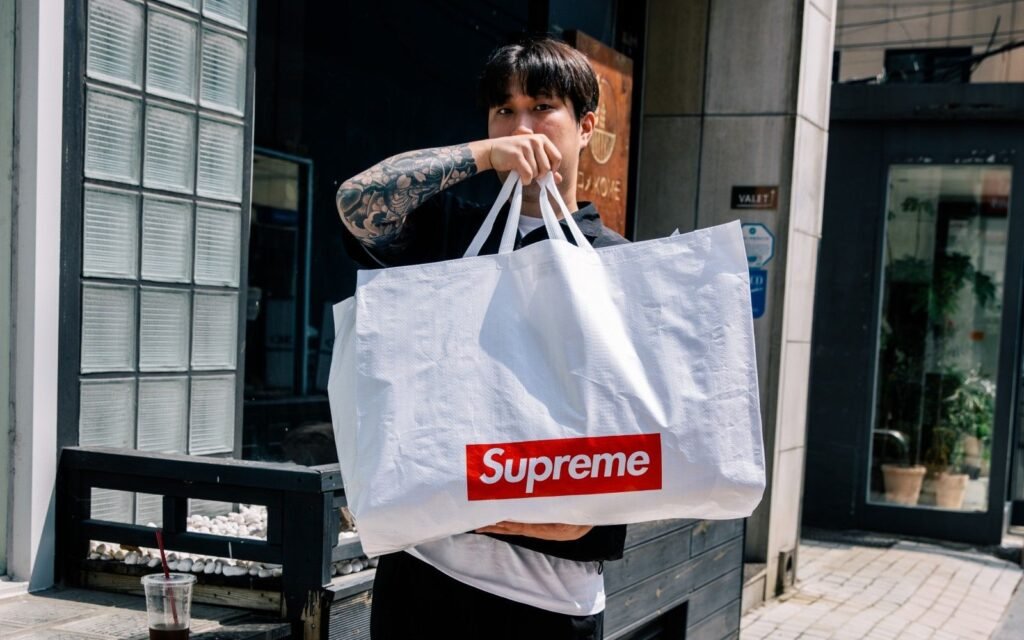
Dubai’s Streetwear Evolution Beyond Supreme
Dubai’s streetwear scene has evolved significantly beyond Supreme’s influence towards more diverse brand preferences. Local consumers now prioritise brands that reflect regional culture and values rather than importing American skateboarding aesthetics. This evolution mirrors global trends towards localised fashion preferences.
Regional streetwear brands have emerged to serve Middle Eastern markets that global brands often ignore. These local alternatives understand cultural nuances and religious considerations that foreign brands typically miss. The growth of regional alternatives reduces dependence on American streetwear labels.
Dubai’s luxury shopping culture has shifted towards brands that offer exclusivity through quality rather than artificial scarcity. Consumers increasingly prefer investment pieces over disposable fashion trends. This preference change disadvantages brands like Supreme that rely on frequent product releases.
The resale market in Dubai now focuses on vintage and rare pieces rather than contemporary Supreme releases. This shift indicates that Supreme’s current products lack the cultural significance necessary for collector interest. Historical pieces maintain value while recent releases depreciate rapidly.
Social media influencers in Dubai have moved away from Supreme towards brands that generate more engagement and cultural relevance. These tastemakers recognise that their audiences seek fresh content rather than repetitive brand promotion. The influence migration accelerates Supreme’s cultural decline.
Cultural events and fashion shows in Dubai increasingly feature alternative streetwear brands rather than Supreme. Event organisers seek brands that create excitement and cultural conversation. Supreme’s predictable presence no longer generates the buzz that event planners desire.
The Economics of Cultural Capital Loss
Supreme’s financial decline reflects the broader economic impact of cultural capital loss in fashion markets. The brand’s inability to command premium prices demonstrates how quickly cultural relevance translates into commercial value. This connection makes cultural authenticity essential for long-term business success.
Resale market performance provides objective measurement of brand cultural health over time. Supreme’s declining resale values indicate reduced consumer demand and cultural relevance. These market signals predict future retail performance and brand trajectory.
Brand valuation models struggle to account for cultural authenticity factors that drive streetwear success. Traditional financial metrics cannot capture the emotional and social connections that create premium pricing power. Supreme’s acquisition may have overvalued quantifiable assets while undervaluing intangible cultural elements.
Customer lifetime value calculations become complex when cultural brands alienate their core constituencies. Supreme’s corporate acquisition may have gained mainstream customers while losing high-value enthusiasts. The net economic impact depends on relative value of different customer segments.
Marketing efficiency decreases dramatically when cultural brands lose authentic connections with their communities. Supreme’s increased marketing spend generates lower returns compared to previous organic growth periods. Authentic cultural movements provide free promotion that corporate campaigns cannot replicate cost-effectively.
Innovation investment becomes less effective when brands lack cultural credibility to launch new concepts. Supreme’s recent product launches receive skeptical reception regardless of objective quality. Cultural decline creates negative feedback loops that undermine future development efforts.



